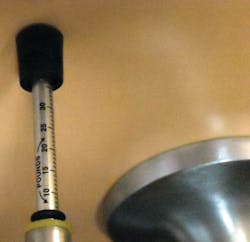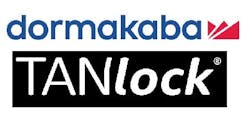All locksmiths are governed by a variety of regulatory requirements including building codes, life safety codes, and the Americans with Disabilities Act (ADA). Locksmiths have to deal with government and related agencies. Knowing the rules and regulations plays a significant role in the choices of door hardware and its installation. Not abiding by the rules can result in significant problems.
The Americans with Disabilities Act of 1990 prohibits -- under certain circumstances -- discrimination based on disability. Disability, roughly stated, is a physical or mental impairment substantially limiting a significant activity in someone's life. Because the ADA is an Act, determination of whether a condition is considered a disability is made on an individual basis. Specific conditions that are excluded from disabilities include impairments that are correctable, such as vision and current substance abuse.
The Americans with Disabilities Act Amendments Act (ADAAA), effective January 1, 2009, broadened the interpretation of the ADA and countermanded prior court rulings that were considered too restrictive regarding expansion of the scope of the ADA.
On Sept. 15, 2010, the Department of Justice published in the Federal Register revised regulations in Title II Government (local and State) and Title III (private sector) of the ADA. The Architectural Barriers Act (ABA) governs access to federally funded facilities, including federal, military, and post office buildings.
The 2010 ADA Standards for Accessible Design set minimum requirements to be readily accessible to and usable by individuals with disabilities. This adoption establishes a revised reference point for entities undertaking readily achievable barrier removal.
When dealing with the Americans with Disabilities Act, a single section, ADA 4.13.1 through 4.13.12 (Doors), deals with locksmith-related hardware.
Here are some examples:
Doorways shall have a minimum 32" clear opening with the door open 90 degrees, measured from the face of the door and the opposite stop. The measurement is made from any piece of door hardware that extends beyond the door face. This can include an exit device push bar in the extended position. Exceptions include shallow closets.
If the door is equipped with a door closer, the sweep period of the closer shall be from an open position of 70 degrees, the door will take at least 3 seconds to move to a point three inches from the latch, measured to the leading edge of the door. The centerline of the door handle or lever cannot be higher that 48" above the finished floor. Door locks must be operable using a single closed fist. Levers, push-type mechanisms, and U-shaped handles are acceptable designs. Of necessity, this means older style knob locks would not be useable.
Force Limitations: There are maximum amount of force limitations for operating a door lock and opening a door. There can be a 15 pounds force maximum required to release the latch. Up to a maximum of 30 pounds force can be required to set the door in motion from closed position to approximately four inches. A maximum of five pounds force for interior doors, to swing the door from four inches to open position. The open position varies depending upon location. A maximum of 15 pounds force for exterior doors, to swing the door from four inches to open position. The forces are applied along the latch side of the door.
To meet ADA regulations, it is necessary to determine the amount of pounds force required to release the latch, set the door in motion and swing the door to the open position. A Door Pressure Gauge (DPG) can be used. Most DPG's have a range of 0-35 pounds. The more pressure exerted against the gauge, the higher the pound force being applied.
When using a DPG, move the O-ring to the zero position on the scale. To test releasing the latch, place the rubber tip against the top edge of the lever or handle and push down to retract the latch bolt. The bolt should retract into the edge of the door with no more than 15 pounds force. Read the gauge.
Reposition the O-ring to zero. With the latch retracted, start the door moving away from the jamb and immediately place the rubber tip onto the edge of the swing side of the door. Push against the door until it is at four inches. Read the scale. A maximum of 30 pounds force can be exerted to open the door to this position.
Reposition the O-ring to zero. Start the door moving towards the open position from the four inch position using your hands. Once the door is moving place the rubber tip of the DPG against the edge of the swing side of the door. Use the DPG to push against the door until it is at 70 degrees open. Read the scale. A maximum of 5 pounds force can be exerted to open an interior door to this position. A maximum of 15 pounds force can be exerted to open a non-fire rated opening door to this position. Make adjustments or repairs as necessary.
To purchase a DPG, contact your local locksmith distributor or type in “door pressure gauge” in any online search engine.
If you are installing a threshold, the edge can be no higher than ¼" above the finished floor, or if the threshold edge is beveled, it can be no higher than ¾" above the finished floor.
There are exceptions. Many private clubs, religious organizations or properties designated as historically significant under State or local law may not be bound by Title III as an entity. This is limited to the sanctuary or if a private club, where non-members may not enter. These facilities must comply with the provisions of Title III of the ADA to the extent feasible. For example, public spaces in the religious organizations or private clubs must follow ADA.
The ADA is under the local building and fire codes, it is under state law (minimum standards). Local codes can be more stringent. The Local Authority Having Jurisdiction (LAHJ) is responsible to enforce the ADA.
To determine your LAHJ, call the local fire protection office, fire chief, fire marshal or city government and ask who the fire protection official is for the jurisdiction. In larger jurisdictions, there may be a specific person or organization for the ADA issues.
LAHJs have almost unilateral decision making power. They decide whether the door hardware conforms to their interpretation of the fire codes, life safety codes, state and local building codes, and interpretations of the ADA. Their mission is to insure life safety and accessibility for all.
The information provided does not cover the Architectural Barriers Act (ABA) for federally funded facilities.
For information about the ADA, including the ADAAA and the revised 2010 ADA regulations, please visit the Department’s Web Site www.ADA.gov or for answers to specific questions, call the ADA Information Line at 800-514-0301 .






